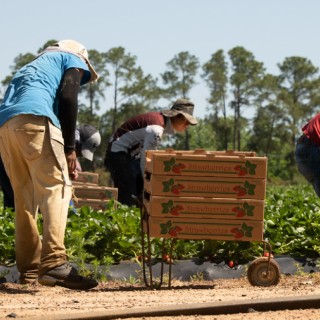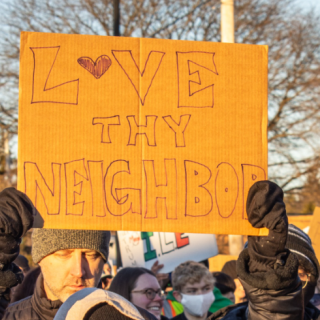As the 2020 Democratic primary heats up into the new year, there is a larger debate brewing within the party itself – even bigger than the already huge debates that feature anywhere from ten to twenty candidates on television. It’s an important debate about the soul of the party and what it will stand for going forward.
This debate began as far back as 2015 with the candidacy of Senator Bernie Sanders from Vermont, who brought attention to the fact that Democrats had gotten too corporate and complacent when it came to issues affecting the working class. Sanders tried to revive more of the progressive positions that got lost during the Clinton presidency and again (even more so) during the Obama years. It was a welcome take, especially for former Democrats like myself. During the Bush/Cheney administration, Democrats like Sanders (although he’s technically served as an Independent since being elected to Congress in 1990) would stand up against the illegal wars and spying that became the norm after 9/11. However, while Obama was in office, despite the fact that he campaigned on peace and “restoring habeas corpus,” violating civil liberties and fighting wars in the name of terrorism stayed in vogue and Democrats were complacent.
Now, this progressive wing of the Democratic Party has seen a resurgence, giving birth to new factions like the Justice Democrats and Democratic Socialists of America, which we’re seeing reflected amongst the candidates for president. Joining Sanders on the more progressive side of the aisle are candidates like Sen. Elizabeth Warren from Massachusetts and Rep. Tulsi Gabbard of Hawaii, the latter who vehemently supported Sanders’ candidacy in 2016, so much so that she had to leave her position with the DNC. This anti-war, pro-healthcare-for-all contingent is growing with young people and getting more progressives, like Rep. Alexandria Ocasio-Cortez of Queens, elected to office. So clearly there is something appealing about it – and perhaps even popular.
Of course, on the other side of the ring are the business-as-usual centrist Democrats, such as former Vice President Joe Biden and many others. While this faction resembles more of the same moderate mindset that Secretary of State Hillary Clinton represented, it’s still a powerful force within the party and has plenty of money. In fact, even though every Democrat in the debates these days sounds more progressive than most politicians, there are still plenty of holdouts who fear the party may be going “too far to the left.” In addition to Biden, Senators Amy Klobuchar, Michael Bennet, Kamala Harris, Cory Booker and even South Bend Mayor Pete Buttigieg all warn that taking things “too progressively” could ruin the Democrats’ chances of defeating President Donald Trump in 2020.
The question for Democrats to ask themselves now is, how far left is too far left? And does it really matter or is it actually fine? After all, even when Obama ran as a more progressive candidate against his closest primary opponent (Clinton) he did end up winning the presidency (twice!) Moderate centrists like Clinton, Senator John Kerry and even former Vice President Al Gore ended up squandering some of the most winnable elections the Democrats ever had. Historically, Democrats have actually gone in a more socialist direction for the last 100 years, until the Clinton and Obama administrations pulled it back towards the center.
In post-Civil War America, the Democrats basically just represented the last remnants of the old racist south and the party only retook the presidency a few times with Grover Cleveland and Woodrow Wilson amidst a lineage of forgettable Republican presidents. In both of those cases, it was because a strong pro-farmer, pro-worker, anti-Gilded Age political faction was slowly building throughout the country in the 1880s and beyond.
When Democrats finally fully embraced these more socialist, pro-worker policies, it was after the disastrous stock market crash in 1929. Subsequently, this led to Franklin Roosevelt’s presidency, which brought about a government-infused economic revolution, which revitalized the country at a time when it desperately needed it.
In turn, Democrats were rewarded with presidential power for decades with FDR and even after his death with Harry S. Truman. They popped back up again in the 1960s with presidents like John F. Kennedy and Lyndon B. Johnson, who built their own socialist-style legacies with the Great Society, Civil Rights Act, Medicare Act and other Social Security Act Amendments. So there is a historic precedent for Democrats going farther left and having those policies – and presidents – be pretty popular.
Either way, it’s a debate worth having as Democrats still struggle to find their identity and understand what happened in 2016 to get us a president like Donald Trump. Whether the socialist, progressive, centrist or moderate wings of the party ultimately prevail, the more voices that take part in the debate, the better.



